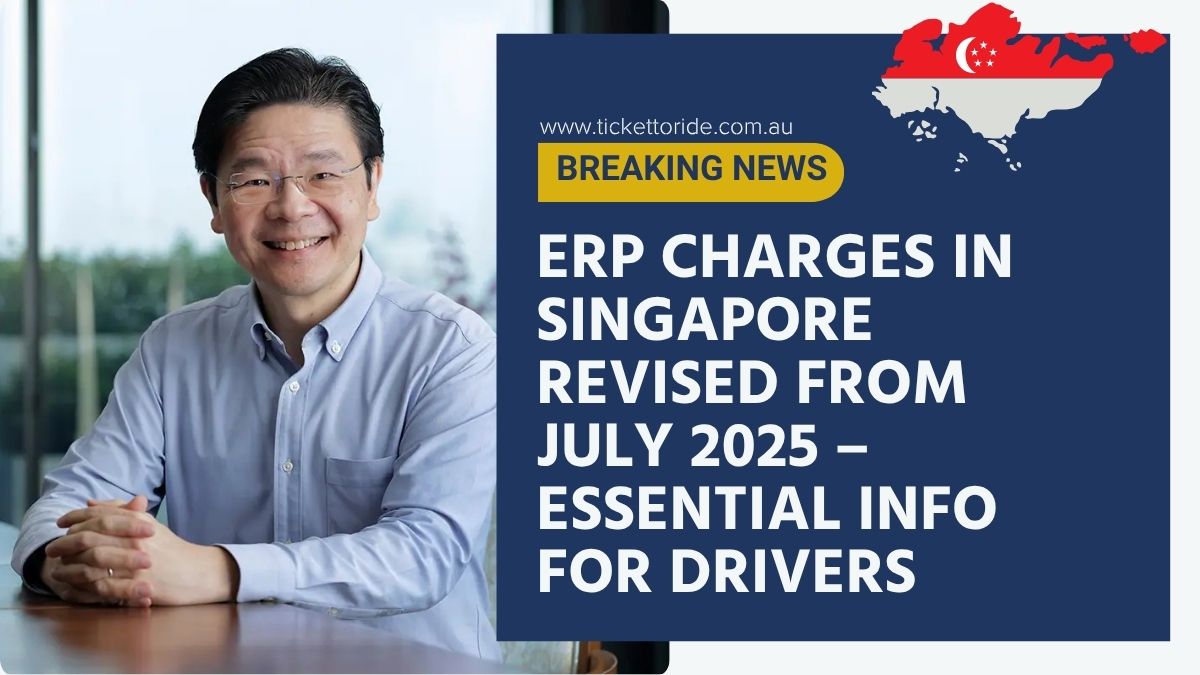In a significant update, Singapore’s Land Transport Authority (LTA) has announced changes to the ERP charges set for July 2025.
This reform is a key part of the LTA’s ongoing initiative to optimize the country’s mobility and traffic flow.
Designed to address congestion and refine traffic distribution, the new ERP structure will impact road users across Singapore, especially during peak hours.
Key Changes in ERP Charges for July 2025
The ERP charges revision is not a typical adjustment but rather a strategic overhaul aimed at addressing evolving traffic dynamics in Singapore, particularly in the wake of post-pandemic changes.
The revision is informed by the latest traffic data and aims to ensure better management of vehicle flow, especially with the return of tourist traffic and a rise in private-hire and delivery services.
Why the Revision Matters for Singapore Drivers
This change to the ERP structure will have significant consequences for motorists across the city-state.
The revised charges are designed to ease congestion during peak periods, while also optimizing the distribution of traffic across key roads.
As part of this overhaul, some gantries will experience increased charges during the weekday morning and evening rush hours, while others may have their tolls reduced or suspended.
The revision comes in response to several factors, including the growing number of vehicles on the road and the increased demand for road usage during high-traffic periods.
To mitigate bottlenecks and optimize the flow of traffic, the new structure redistributes traffic volumes more efficiently.
Here’s a quick comparison of the new ERP rates:
| Time Slot | Old Rate (SGD) | New Rate (SGD) | Notes |
|---|---|---|---|
| 7:00 AM – 8:00 AM | 1.50 | 2.00 | Increased to manage morning peak |
| 8:30 AM – 9:00 AM | 2.00 | 2.50 | Highest congestion period |
| 12:00 PM – 1:00 PM | 1.00 | 0.50 | Reduced to encourage off-peak |
| 5:30 PM – 6:30 PM | 2.50 | 3.00 | Evening rush demand surge |
Which Routes Will Be Affected the Most?
The ERP charges revision will most heavily impact major roads like the CTE (Central Expressway), PIE (Pan Island Expressway), and ECP (East Coast Parkway). These expressways are frequently congested, with traffic volumes regularly exceeding safe limits.
Notably, the gantries near the Orchard exit on the CTE will see a $0.50 increase due to persistent congestion in that area.
In addition to adjustments on existing gantries, the LTA will install new gantries in developing, high-traffic areas such as the Punggol region and the Jurong Innovation District.
These changes aim to manage traffic proactively in areas experiencing rapid development. Meanwhile, ERP rates in quieter industrial zones will be reduced or even temporarily suspended to accommodate changing traffic patterns.
Tips for Drivers to Adapt to the Changes
To minimize the effects of these revisions, drivers should consider the following strategies:
- Reassess Daily Travel Times: Avoid traveling during high-rate periods, such as peak morning and evening hours.
- Use Real-Time Traffic Apps: These apps can provide updates on ERP charges and help you adjust your route accordingly.
- Consider Alternative Transport: If possible, use public transport or carpool during high-fee times to save on costs.
- Plan Routes Efficiently: Businesses, especially those relying on road logistics, should audit their routes to ensure cost efficiency during peak ERP hours.
For delivery services and mobile vendors, even small changes in the ERP charges can have a significant impact on their operational costs over time.
Broader Implications for Singapore’s Road Pricing System
The July 2025 ERP revision is part of a larger vision for a dynamic road pricing system. The goal is to continue refining Singapore’s approach to managing road congestion, with dynamic pricing possibly becoming a feature in the future.
This would mean pricing could fluctuate in real time, based on current traffic conditions, rather than being based solely on static gantry locations.
LTA has hinted that this revision will lay the groundwork for the integration of the ERP 2.0 system. The new system could use satellite-based technology to implement granular pricing, offering a more flexible, data-driven approach to road pricing.
This is aimed at reducing congestion, improving traffic flow, and encouraging public transport usage.
The ERP charges revision in July 2025 is a crucial step in Singapore’s efforts to manage traffic more efficiently and tackle the challenges posed by increasing vehicle volumes.
With changes primarily affecting key expressways and arterial roads, both commuters and businesses should adapt quickly to mitigate the impact.
By using real-time tools and considering alternative travel options, drivers can stay ahead of the changes.
FAQs
What is the ERP charges revision in Singapore?
The ERP charges revision, effective July 2025, adjusts toll fees to better manage traffic flow, reduce congestion, and optimize road use.
Which areas are most affected by the new ERP charges?
Major routes such as the CTE, PIE, and ECP will see increased charges, while new gantries will be introduced in developing areas like Punggol and Jurong Innovation District.
How can drivers prepare for the ERP changes?
Drivers can reassess their travel times, use real-time traffic apps, and consider carpooling or public transport during peak hours.

